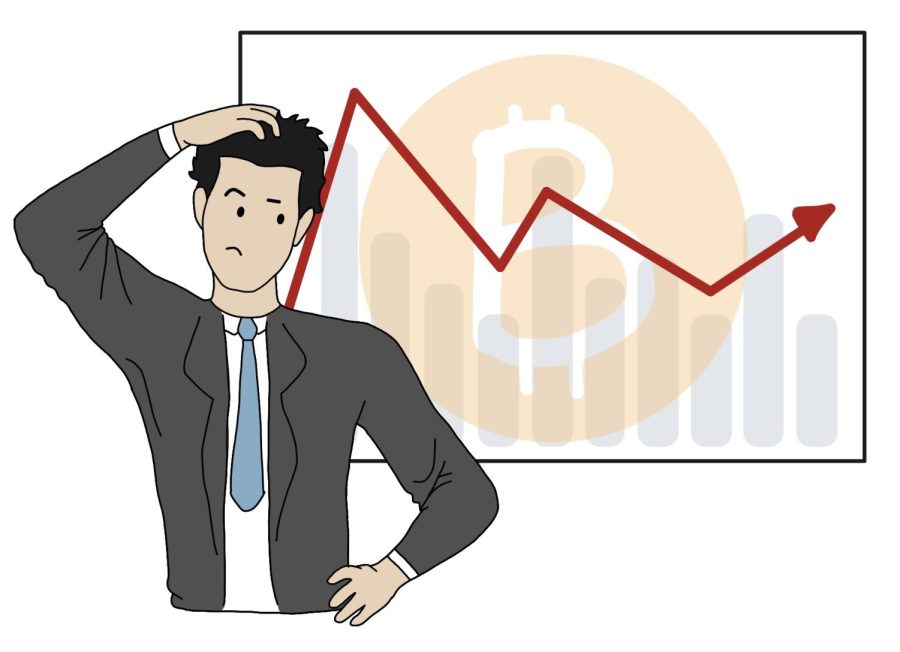OPINION: The concepts of cryptocurrencies and NFTs are fundamentally flawed
Cryptocurrencies and NFTs can potentially bring negative impacts on to society and the environment.
Since the start of the pandemic, cryptocurrencies have become widely popularized as a financial and investment tool. The concept is not relatively new as the idea was first formulated in 2008 by anonymous moniker Sakashi Nakamoto through their Bitcoin White Paper. Some see cryptocurrencies as a currency of the future. However, its costs often outweigh the benefits.
People argue that the currency is decentralized, meaning that it is not subject to control by a government bank. This point is weak, in part due to global economics. The Federal Reserve System, for example, is the U.S. government’s central bank that regulates the market. Numerous people are responsible for moderating the financial state of the country and ensuring that the dollar’s value does not turn the nation into the next Weimar Republic.
On the other hand, crypto does not have that level of regulatory oversight, and the value of a specific token fluctuates every day (excluding stable coins such as USD Coin, which bases itself on the actual United States Dollar). For example, according to coinmarketcap.com, the value of Bitcoin was at its highest peak, $67,566.83 per token on Nov. 13th of 2021, then continuously dropped in value to around $36,954 per token by Jan. 24, 2022. This idea runs almost parallel to a stock market, where people invest in a certain company in hopes that it will continue to grow and payout in dividends. With this currency, however, there are no dividends paid out, or any money made from this mint. Crypto runs on the greater fool theory, where someone needs to pay more for the coin than what the owner bought in order to turn a profit. The currency is not like a business, although it acts as an investment tool to make more money.
New ideas also bring in new innovations, which in this case, has birthed the NFT, or non-fungible tokens concept. The design behind this is that one would “own” the digital item they bought, and it would be verifiable through the blockchain system. The technique has already been used to sell a lot of online content on the internet, such as Jack Dorsey’s first tweet on the platform or an NBA basketball highlight. It is a digital collector’s item, except the idea is fundamentally flawed from its inception. Many investors have deemed it as a speculative asset, which is the belief that something will become more valuable in the future, and many people have jumped on the train to try and sell their NFTs to people. There have been multiple series of this concept made, such as the Lazy Lions or pixel art style NFTs, which have drawn significant ire from portions of the internet, and also have made more people attracted to these products.
The speculative asset reasoning has also made specific NFTs more valuable, with the prices of these works selling for tens of thousands each day, even by the hour. The speculative asset idea causes hyperinflation in the non-fungible token world, caused mainly by their owners. Some will trade – often at higher prices between themselves – these content pieces for multiple periods at a time in order to inflate the value of the creation, and eventually, someone else will come along and take it off their hands, which lets the original owner get more than what they bought for it. This process repeats itself and then is multiplied by thousands of other people running the same schtick worldwide, making the issue more prevalent. The concept requires more mining machines to verify this, and as such, the system adds additional pollution to an already existing situation.
There has already been a public outcry against the mass adoption of crypto, mainly due to the negative environmental impacts that it brings upon Earth, contributing to more pollution that is unnecessarily needed. Unlike standard computer devices or data servers, mining machines primarily focus on conducting mathematical calculations to confirm transactions. These calculations have to be close to a set of 64-digit binary numbers known as a hash (for example, SHA-256 is a hashing algorithm used for security purposes), and once this target is set, the transaction is verified and the miner responsible gets a cut percentage for their work. This amount of computing requires a significant amount of power, and it pays the price for what it does.
According to the Digiconomist’s Bitcoin Energy Consumption Index, a single transaction for Bitcoin takes up about 2,164.56 kilowatts per hour of electricity. That is more than a singular U.S. household, rated at 893 kWh by the U.S. Energy Information Administration. What’s worse is that most major crypto networks require miners by default in order to maintain their value’s worth, and the majority of the electricity required to power these miners is not green. In fact, the profit outcome does not leave a large enough dent to offset the bills, with some seeing it as “pennies from heaven, like California gold prospectors in 1849,” as investopedia.com said. Mining crypto is detrimental to our planet and unsustainable unless greener alternatives from the electrical industry become more commonplace and reliable.
If crypto is to be the next “currency of the future,” as many predict, then its adoption would need to be accepted among the populus as a viable green alternative. Mining computers could be placed rather near energy-efficient regions, with areas generating enough electricity to match or go higher than an average mining computer’s consumption. While there have been certain policies that have outright banned crypto, such as in China, for example, it would seem better for the public to understand this new technology, and subsequently, how to use it to boost the economy. They should understand the risks, potential flaws, security concerns and also their potential gains, if possible.


